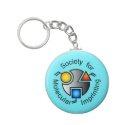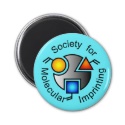|
|
Reference type: Journal
Authors: Shi Y, Peng DD, Shi CH, Zhang X, Xie YT, Lu B
Article Title: Selective determination of trace 17β-estradiol in dairy and meat samples by molecularly imprinted solid-phase extraction and HPLC.
Publication date: 2011
Journal: Food Chemistry
Volume: 126
Issue: (4)
Page numbers: 1916-1925.
DOI: 10.1016/j.foodchem.2010.12.020
Alternative URL: http://www.sciencedirect.com/science/article/B6T6R-51P9TDJ-1/2/21c92893ff6b7313ecaf19cad3f302e7
Abstract: Molecularly imprinted solid-phase extraction (MISPE) combined with HPLC were used to detect trace 17β-estradiol (E2) in different dairy and meat samples. E2 imprinted mono-dispersed microspheres prepared by modified precipitation polymerisation method were used as MISPE sorbents. Under optimum MISPE and HPLC conditions, trace (0.116-0.461 nmol kg-1) E2 in different dairy and meat samples can be detected accurately using UV detector when large amount of sample (500 g) was analysed. Recoveries of E2 from spiked (0.1-5 nmol kg-1) milk, yogurt, beef, pork and chicken were higher than 74.18%, 71.92%, 67.21%, 64.20% and 65.93%, respectively with RSDs less than 8.38%. MISPE can enrich E2 selectively, which is helpful to have better HPLC separation and higher recoveries than C18 SPE. MISPE combined with HPLC-UV are reliable methods to determine trace E2 in dairy and meat samples with high accuracy and repeatability
Template and target information: 17β-estradiol, E2
Author keywords: molecularly imprinted microspheres, HPLC-UV, Modified precipitation polymerisation, MISPE, Trace 17β-estradiol, Dairy and meat samples
|


 SMI keychain blue
SMI keychain blue







 Good morning caffeine apron
Good morning caffeine apron







 SMI magnet blue
SMI magnet blue






